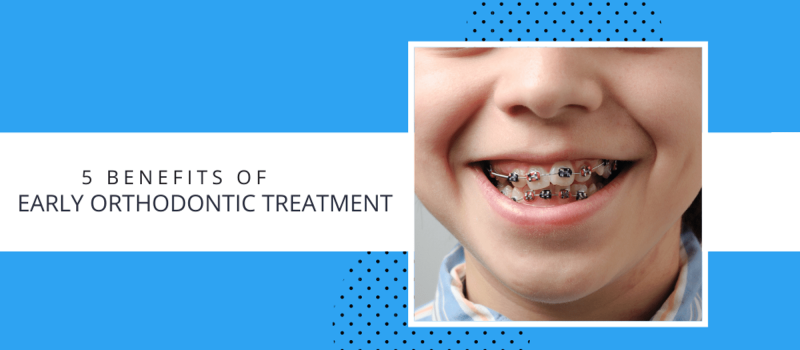
Orthodontic treatment has long been a staple in dental care, helping to correct a wide range of issues with the alignment and positioning of the teeth and jaw. Traditionally, orthodontic treatment has been reserved for teenagers and adults.
Still, recent advancements in the field have made it increasingly clear that early intervention can be highly advantageous for many patients. The American Association of Orthodontists proposes that children have their first orthodontic evaluation no later than age seven. This article will explore five benefits of getting early orthodontic treatment.
1. Early Detection of Potential Problems
The primary advantage of early orthodontic treatment is that it allows for the early detection of potential issues with the teeth and jaw. By age seven, most children have a mix of primary (baby) and permanent (adult) teeth, which allows orthodontists to identify any developing problems with the alignment, spacing, or bite. Early detection means treatment can begin before these issues become more severe, complicated, or costly.
2. Guiding Jaw Growth and Development
One of the main goals of early orthodontic treatment is to guide the growth and development of the jaw, ensuring that it can accommodate all permanent teeth and that the upper and lower jaws are properly aligned. In some cases, a child’s jaw may not grow symmetrically, or there may not be enough space for all permanent teeth to erupt. Early intervention can address these issues and create a more harmonious and functional bite.
3. Reducing the Need for Tooth Extractions
In the past, it was common for orthodontic treatment to involve extracting one or more permanent teeth to create space for the remaining teeth. However, early orthodontic treatment can create space for all permanent teeth without needing extractions. This can be achieved through a mixture of techniques, such as expanding the upper arch, guiding the growth of the jaw, and using appliances to move teeth into more optimal positions.
4. Reducing the Duration and Complexity of Future Orthodontic Treatment
Addressing orthodontic issues early in a child’s development can reduce the duration and complexity of any future treatment that may be required. Early intervention can sometimes eliminate the need for braces or other orthodontic appliances altogether.
When braces or other appliances are necessary, early treatment can shorten the time they need to be worn, making the overall treatment process more efficient and comfortable for the patient.
5. Improving Self-Esteem and Confidence
Orthodontic issues can significantly impact a child’s self-esteem and confidence, particularly during the already challenging adolescent years. Early orthodontic treatment can help to address these issues before they become more noticeable, allowing children to feel more confident in their appearance and less self-conscious about their smiles.
Early orthodontic treatment can be particularly advantageous for children who may be prone to teasing or bullying due to the appearance of their teeth.
Early Orthodontic Treatment Overall
Early orthodontic treatment offers numerous benefits for young patients, including early detection of potential problems, jaw growth, and development guidance, reduced need for tooth extractions, and improved self-esteem and confidence. By seeking an evaluation from a qualified orthodontist no later than age seven, parents can help to set their children on the path to a lifetime of healthy, beautiful smiles.
At Sullivan Orthodontics, we believe that starting orthodontic treatment at an early age is the key to a lifetime of healthy, beautiful smiles. Our experienced orthodontists in Bend, Oregon and Redmond, Oregon will work with you and your child to create a personalized treatment plan that helps address any orthodontic issues while promoting jaw growth and development. Contact us today to schedule an evaluation and get your child on the path to a healthy, confident smile.
